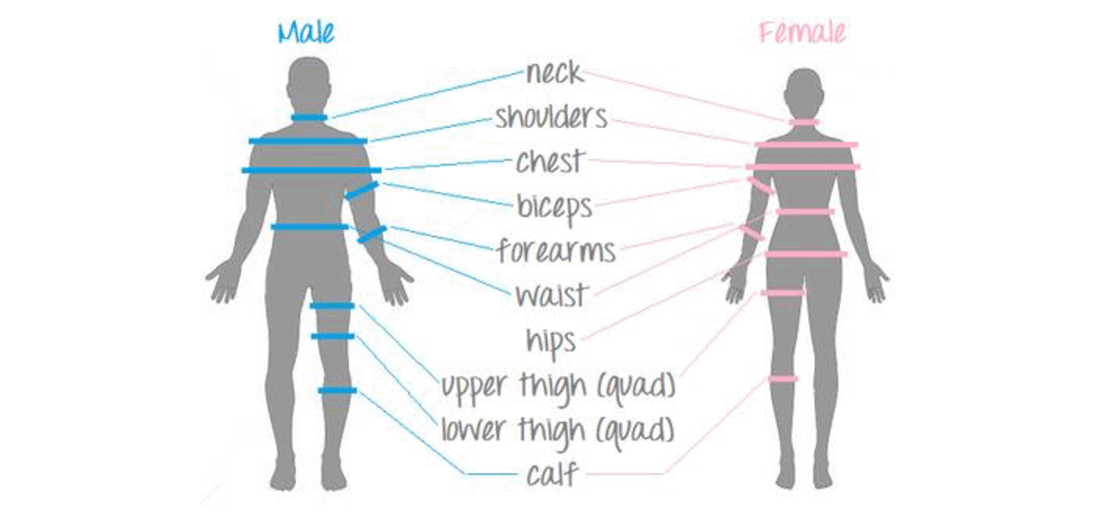It’s easy to get discouraged when you work so hard to lose weight and your efforts don’t reflect on the scale. Taking your measurements is a better way to track progress because you get an idea of what’s really happening with your body. Many times you’ll see a loss of inches even if the scale isn’t moving. Losing inches can be even more impactful than losing pounds. Taking your measurements will reassure you that the fat is coming off, even if you’re not losing fat exactly where you want just yet. It does take time for your body to get around to those stubborn areas, so patience is also an important ingredient. Don’t worry if you lose inches without losing weight. That’s actually a sign you’re losing fat and gaining muscle, which is great progress.
To ensure accuracy, measure in exactly the same place and under the same conditions each time. For all measurements, pull the tape measure so that it sits on the surface of the skin, but doesn’t compress the skin.
Here are some instructions and tips to help you. Common Body Measurements
- Bust: Place the measuring tape across your nipples and measure around the largest part of your chest. Be sure to keep the tape parallel to the floor.
- Chest: Place the measuring tape just under your breasts/pecs and measure around the torso while keeping the tape parallel to the floor.
- Waist: Place the measuring tape about a 1/2 inch above your bellybutton (at the narrowest part of your waist) to measure around your torso. When measuring your waist, exhale and measure before inhaling again.
- Hips: Place the measuring tape across the widest part of your hips/buttocks and measure all the way around while keeping the tape parallel to the floor.
- Thigh: Measure around the largest part of each thigh.
- Calves: Measure around the largest part of each calf.
- Upper arm: Measure around the largest part of each arm (above the elbow).
- Forearm: Measure around the largest part of each arm (below the elbow).
- Neck: Measure around the largest part of the neck.
Tips for Measuring
- Use a flexible measuring tape, such as plastic or cloth.
- When taking measurements, stand tall with your muscles relaxed and feet together.
- Apply constant pressure to the tape (so it doesn’t sag) without pinching the skin.
- Measure under the same conditions each time, such as wearing the same clothes (or none at all). It’s a great idea to take your measurements first thing in the morning before eating or drinking anything.
- Measure yourself in front of a mirror to make sure the tape is positioned correctly. If possible, have someone else do the measuring for you.
- Take your measurements only once a month every month.
- When you’re done measuring, track your measurements on a graph so you can see your steady progress.


